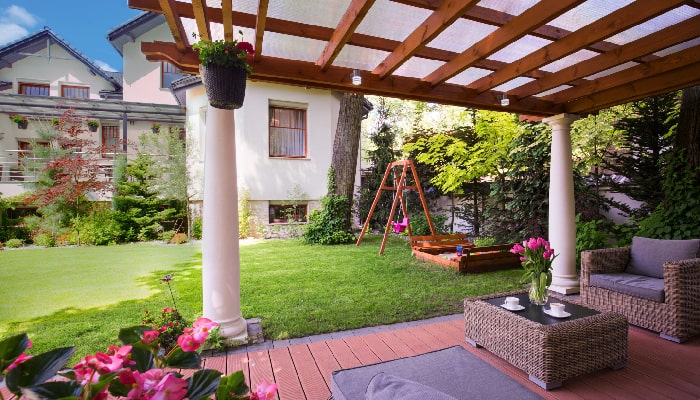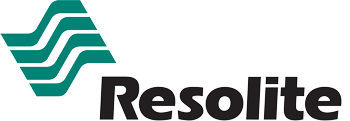In the realm of construction materials, few have had such an impact as polycarbonate. This robust thermoplastic polymer, characterized by its exceptional durability, versatility, and energy efficiency, has revolutionized the way architects and builders approach roofing. This article offers an in-depth exploration of polycarbonate roofing, its key benefits, and the many applications it has found in the modern world.
What is Polycarbonate Roofing?
Before diving into the benefits of polycarbonate roofing, it’s essential to understand what polycarbonate is. A type of thermoplastic polymer, polycarbonate is known for its strength, flexibility, and transparency. Because of these characteristics, polycarbonate is often made into corrugated or multiwall sheets for roofing applications, offering a combination of strength, insulation, and light transmission that few other materials can match. We will talk about this in more detail later on.
Its Many Benefits
Polycarbonate roofing has gained more and more recognition in recent years due to its many benefits, which include:
- Durability and Impact Resistance
One of the most remarkable advantages of polycarbonate roofing is its exceptional durability. Polycarbonate is virtually unbreakable, boasting an impact resistance up to 200 times greater than glass. This quality allows it to withstand severe weather conditions, including hailstorms and high winds, without sustaining damage. Its strength significantly extends the lifespan of polycarbonate roofs, often outlasting traditional roofing materials such as asphalt shingles or tiles.
- UV Protection
Polycarbonate sheets come with built-in UV protection. This feature allows them to effectively block harmful ultraviolet rays from the sun while still permitting natural light to pass through. This attribute makes polycarbonate roofing a popular choice for greenhouses, sunrooms, patios, and commercial buildings where light transmission is desirable.
- Lightweight
Despite their great strength, polycarbonate sheets are very lightweight. This property simplifies transportation and installation, reducing labor costs and the need for heavy-duty structural support. It also makes polycarbonate roofing an attractive option for retrofitting older buildings without putting undue stress on the existing structure.
- Thermal Insulation
Multiwall polycarbonate sheets provide superior insulation due to their unique cellular structure. The air gaps within the panels create a thermal barrier, reducing heat transfer and helping to maintain a stable indoor temperature. This insulation can contribute to significant energy cost savings for heating or cooling buildings.
- Design Versatility
Polycarbonate roofing is available in a variety of colors and finishes, offering tremendous flexibility in design. Whether you’re aiming for a modern, industrial aesthetic with clear panels or prefer a more traditional look with tinted or opaque sheets, polycarbonate roofing can accommodate your needs.
- Environmentally Friendly
Polycarbonate roofing sheets are recyclable and have a lower environmental impact than many traditional roofing materials. They also contribute to energy efficiency, further reducing a building’s carbon footprint.
Applications of Polycarbonate Roofing
Given these advantages, it’s no surprise that polycarbonate roofing has found its way into an increasing number of applications. You may be asking yourself, “what is polycarbonate roofing good for?”. Here are a few examples:
- Greenhouses: The UV protection, light transmission, and thermal insulation properties of polycarbonate make it the ideal material for greenhouses. It allows for optimal plant growth by letting in ample sunlight while blocking harmful UV rays and maintaining a stable internal temperature.
- Patios and Pergolas: For outdoor living spaces, polycarbonate roofing provides the perfect balance of light and protection. It allows homeowners to enjoy natural light while being protected from the elements. This enhances the comfort and usability of their patios and pergolas throughout the year.
- Industrial Buildings: The durability, ease of installation, and cost-effectiveness of polycarbonate roofing make it a great choice for warehouses, factories, and other commercial structures. Its impact resistance and longevity ensure that these buildings are well-protected for a long time, reducing maintenance costs.
- Solariums and Sunrooms: These structures benefit from the light transmission and thermal properties of polycarbonate roofing. The result is comfortable, naturally lit spaces that can be enjoyed regardless of the weather outside.
- Sports Facilities: Polycarbonate roofing is also an excellent choice for sports facilities like stadiums and swimming pools. It provides protection from the weather, reduces noise, and allows natural light to illuminate the space.
The Science Behind Polycarbonate
To really get what the benefits of polycarbonate roofing are, it’s worth examining the science behind this material. Polycarbonate is a type of polymer, which means it’s composed of large molecules made of repeating subunits. This structure gives polycarbonate its strength and flexibility.
Polycarbonate is also a thermoplastic, meaning it softens when heated and hardens when cooled. This quality allows it to be easily molded into a variety of shapes, including the sheets used in roofing. Additionally, the thermoplastic nature of polycarbonate means it can be recycled, contributing to its eco-friendliness.
The UV resistance of polycarbonate is another significant advantage. This resistance is achieved by adding a UV-absorbing material to the polycarbonate during the manufacturing process. The result is a material that can withstand the sun’s harmful rays without degrading, while still allowing visible light to pass through.
The Future of Polycarbonate Roofing
Polycarbonate wasn’t always a popular choice for roofing. Its use has grown in recent years, driven by increasing awareness of its benefits and advancements in manufacturing technology that have made it more accessible and affordable. As a result, polycarbonate roofing has moved from being a niche product to a mainstream roofing material.
Looking forward, the potential for advancements in polycarbonate technology is vast. Researchers are exploring more sustainable production methods, enhancements in UV resistance, and improvements in the material’s insulation capabilities. While the specifics of these developments remain a topic of future exploration, it’s clear that the story of polycarbonate roofing is far from over. Now that you have answered the question “what is polycarbonate roofing?” you can make better decisions when selecting roofing materials for your projects.
Conclusion
In conclusion, polycarbonate roofing offers many benefits that set it apart from traditional roofing materials. Its durability, UV protection, lightweight nature, thermal insulation, aesthetic versatility, and environmentally friendly attributes make it an invaluable choice for many applications.
As the construction industry continues to seek more sustainable and cost-effective materials, polycarbonate roofing is likely to play an increasingly important role. Its unique combination of strength, lightness, transparency, and environmental friendliness makes it a compelling choice for a wide range of roofing applications.
When it’s time to consider roofing options, don’t overlook the potential of polycarbonate. Its advantages today and the promises of tomorrow make it a choice worth considering. Whether you’re a homeowner looking to renovate, an architect designing a new structure, or a builder seeking reliable and versatile materials, polycarbonate roofing stands as a testament to the innovative evolution in construction materials, merging functionality, durability, and environmental consciousness into one revolutionary product.

Stabilit has the strength of polycarbonate for your roofing needs
Macrolux USA offers high-strength polycarbonate panels in several colors and gauges. One of these options is sure to fit the light transmission and temperature management needs of your project.
Macrolux Rooflite is highly resistant to the harmful effects of weather, including hail damage and surface erosion. It also provides UV protection.
Stabilit has a material that fits your needs. Contact us y and find out more about how we can help!
Stabilit America Inc. is a leading North American manufacturer of fiberglass reinforced panels (FRP) and polycarbonate sheets, with over 65 years of experience. The company offers the widest range of acrylic, polyester, and polycarbonate laminates, backed by international certifications (USDA, Greenguard, FM, ISO 9001, among others), serving industries such as industrial construction, transportation, and sustainable building.


